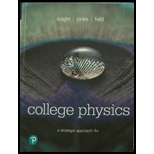
Concept explainers
Four lightweight balls A, B, C, and D are suspended by threads. Ball A has been touched by a plastic rod that was rubbed with wool. When the balls are brought close together, without touching, the following observations are made:
- Balls B, C, and D are attracted to ball A.
- Balls B and D have no effect on each other.
- Ball B is attracted to ball C.
What are the charge states (positive, negative, or neutral) of balls A, B, C, and D? Explain.
To explain: The charge states of balls A, B, C and D.
Answer to Problem 1CQ
The charge states of balls A, B, C and D are negative, neutral, positive, and neutral respectively.
Explanation of Solution
The plastic rod acquires a negative charge, when it is rubbed by wool. Initially, when the rod touches the ball A, it gets polarized and acquires a negative charge. Hence, the charge on ball A is negative.
Balls B, C, and D are attached to ball A:
Balls B, C, and D are attached to ball A due to the attraction force because unlike charges attract. This is possible only if charges on balls B, C, and D are either positive or neutral.
Balls B and D have no effect on each other:
This statement indicates that the balls B and D neither attracted nor repulsed with each other. The like charges repel and unlike charges attract. Therefore, balls B and C posses no charge either positive or negative. Hence, balls B and D are neutral.
Ball B is attracted to ball C:
This statements concludes that the ball C is charged and that is the reason the neutral ball B is attracted towards C. From first statement, it is obvious that the charge of ball C must be either positive or neutral. Ball C is not neutral and hence the charge on ball C is positive.
Conclusion:
Thus, the charge states of balls A, B, C and D are negative, neutral, positive, and neutral respectively.
Want to see more full solutions like this?
Chapter 20 Solutions
College Physics: A Strategic Approach (4th Edition)
Additional Science Textbook Solutions
Physics for Scientists and Engineers: A Strategic Approach with Modern Physics (4th Edition)
Modern Physics
The Cosmic Perspective
Cosmic Perspective Fundamentals
University Physics with Modern Physics (14th Edition)
Introduction to Electrodynamics
- Initially a glass rod and a piece of silk are neutral. After you rub the silk against the rod, the glass rod has a surplus of 3.33 1011 protons. What is the charge q of the silk?arrow_forwardA sphere has a net charge of 8.05 nC, and a negatively charged rod has a charge of 6.03 nC. The sphere and rod undergo a process such that 5.00 109 electrons are transferred from the rod to the sphere. What are the charges of the sphere and the rod after this process?arrow_forwardThe fundamental charge is e = 1.60 1019 C. Identify whether each of the following statements is true or false. (a) Its possible to transfer electric charge to an object so that its net electric charge is 7.5 times the fundamental electric charge, e. (b) All protons have a charge of +e. (c) Electrons in a conductor have a charge of e while electrons in an insulator have no charge.arrow_forward
- The fundamental charge is e = 1.60 1019 C. Identify whether each of the following statements is true or false. (a) Its possible to transfer electric charge to an object so that its net electric charge is 7.5 times the fundamental electric charge, e. (b) All protons have a charge of +e. (c) Electrons in a conductor have a charge of e while electrons in an insulator have no charge.arrow_forwardTwo small, identical metal balls with charges 5.0 C and 15.0 C are held in place 1.0 m apart. In an experiment, they are connected for a short time by a conducting wire. a. What will be the charge on each ball after this experiment? b. By what factor will the magnitude of the electrostatic force on either ball change after this experiment is performed?arrow_forwardAn electroscope is a device used to measure the (relative) charge on an object (Fig. P23.20). The electroscope consists of two metal rods held in an insulated stand. The bent rod is fixed, and the straight rod is attached to the bent rod by a pivot. The straight rod is free to rotate. When a positively charged object is brought close to the electroscope, the straight movable rod rotates. Explain your answers to these questions: a. Why does the rod rotate in Figure P23.20? b. If the positively charged object is removed, what happens to the electroscope? c. If a negatively charged object replaces the positively charged object in Figure P23.20, what happens to the electroscope? d. If a charged object touches the top of the fixed conducting rod and is then removed, what happens to the electroscope?arrow_forward
- Lightning can be studied with a Van de Graaff generator, which consists of a spherical dome on which charge is continuously deposited by a moving belt. Charge can be added until the electric field at the surface of the dome becomes equal to the dielectric strength of air. Any more charge leaks off in sparks as shown in Figure P25.52. Assume the dome has a diameter of 30.0 cm and is surrounded by dry air with a "breakdown" electric field of 3.00 106 V/m. (a) What is the maximum potential of the dome? (b) What is the maximum charge on the dome?arrow_forwardFour balls, each with mass m, are connected by four nonconducting strings to form a square with side a as shown in Figure P25.74. The assembly is placed on a nonconducting. frictionless. horizontal surface. Balls 1 and 2 each have charge q, and balls 3 and 4 are uncharged. After the string connecting halls 1 and 2 is cut, what is the maximum speed of balls 3 and 4?arrow_forwardThree objects are brought close to one another, two at a time. When objects A and B are brought together, they attract. When objects B and C are brought together, they repel. Which of the following are necessarily true? (a) Objects A and C possess charges of the same sign. (b) Objects A and C possess charges of opposite sign. (c) All three of the objects possess charges of the same sign. (d) One object is neutral. (e) Additional experiments must be performed to determine information about the charges on the objects.arrow_forward
- (a) Two protons in a molecule are 3.80 10-10 m apart. Find the magnitude of the electric force exerted by one proton on the other. (b) State how the magnitude of this force compares with the magnitude of the gravitational force exerted by one proton on the other. (c) What If? What must be a particles charge-to-mass ratio if the magnitude of the gravitational force between two of these particles is equal to the magnitude of electric force between them?arrow_forwardReview. A slab of insulating material (infinite in the y and z directions) has a thickness d and a uniform positive charge density . An edge view of the slab is shown in Figure P23.45. (a) Show that the magnitude of the electric field a distance x from its center and inside the slab is E = x/0. (b) What If? Suppose an electron of charge e and mass me can move freely within the slab. It is released from rest at a distance x from the center. Show that the electron exhibits simple harmonic motion with a frequency f=12eme0 Figure P23.45arrow_forwardYou are working for the summer at a research laboratory. Your research director has devised a scheme for holding small charged particles at fixed positions. The scheme is shown in Figure P23.35. A large insulating sphere of radius a carries a total positive charge Q with a uniform volume charge density. A very thin tunnel is drilled through a diameter of the sphere and two small spheres with charge q are placed in the tunnel. These spheres are represented by the blue dots in the figure. They find equilibrium positions at a distance of r on either side of the center of the sphere. Your research director has had great success with this scheme. (a) Determine the specific value of r at which equilibrium exists. (b) Your research director asks you to see if he can extend the system as follows. Determine if it is possible to add transparent plastic tubes as extensions of the tunnel and have the small spheres be in equilibrium at a position for which r a. Figure P23.35arrow_forward
 Physics for Scientists and Engineers, Technology ...PhysicsISBN:9781305116399Author:Raymond A. Serway, John W. JewettPublisher:Cengage Learning
Physics for Scientists and Engineers, Technology ...PhysicsISBN:9781305116399Author:Raymond A. Serway, John W. JewettPublisher:Cengage Learning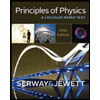 Principles of Physics: A Calculus-Based TextPhysicsISBN:9781133104261Author:Raymond A. Serway, John W. JewettPublisher:Cengage Learning
Principles of Physics: A Calculus-Based TextPhysicsISBN:9781133104261Author:Raymond A. Serway, John W. JewettPublisher:Cengage Learning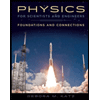 Physics for Scientists and Engineers: Foundations...PhysicsISBN:9781133939146Author:Katz, Debora M.Publisher:Cengage Learning
Physics for Scientists and Engineers: Foundations...PhysicsISBN:9781133939146Author:Katz, Debora M.Publisher:Cengage Learning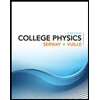 College PhysicsPhysicsISBN:9781305952300Author:Raymond A. Serway, Chris VuillePublisher:Cengage Learning
College PhysicsPhysicsISBN:9781305952300Author:Raymond A. Serway, Chris VuillePublisher:Cengage Learning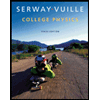 College PhysicsPhysicsISBN:9781285737027Author:Raymond A. Serway, Chris VuillePublisher:Cengage Learning
College PhysicsPhysicsISBN:9781285737027Author:Raymond A. Serway, Chris VuillePublisher:Cengage Learning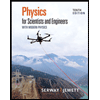 Physics for Scientists and Engineers with Modern ...PhysicsISBN:9781337553292Author:Raymond A. Serway, John W. JewettPublisher:Cengage Learning
Physics for Scientists and Engineers with Modern ...PhysicsISBN:9781337553292Author:Raymond A. Serway, John W. JewettPublisher:Cengage Learning





